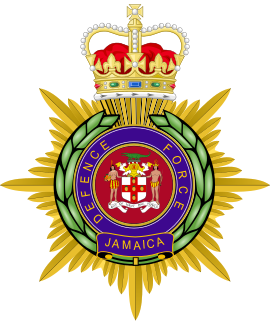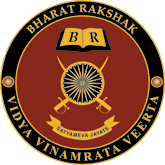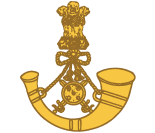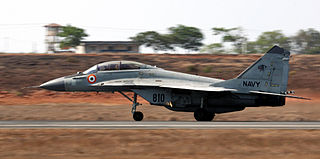Related Research Articles

An adjutant general is a military chief administrative officer.

The National Security Guard (NSG) is an elite counter-terrorism unit under the Indian Ministry of Home Affairs (MHA). It was founded on 22 September 1986 under the National Security Guard Act, 1986, following Operation Blue Star, the Golden Temple attack and the assassination of Indian Prime Minister Indira Gandhi, "for combating terrorist activities and protect states against internal disturbances".

The Jamaica Defence Force (JDF) is the combined military of Jamaica, consisting of an infantry Regiment and Reserve Corps, an Air Wing, a Coast Guard fleet and a supporting Engineering Unit. The JDF is based upon the British military model, with similar organisation, training, weapons and traditions. Once chosen, officer candidates are sent to one of several British or Canadian basic officer courses depending upon the arm of service. Enlisted soldiers are given basic training at JDF Training Depot Newcastle. As on the British model, NCOs are given several levels of professional training as they rise up the ranks. Additional military schools are available for speciality training in Canada, China, the United States, and the United Kingdom.

Beating Retreat is a military ceremony dating to 17th-century England and was first used to recall nearby patrolling units to their castle.

The Mechanised Infantry Regiment is an infantry regiment of the Indian Army, comprising 27 battalions dispersed under various armoured formations throughout India. It is one of the youngest regiments in the army, and though it was formed as a result of lessons learned in the 1965 Indo-Pak War, to give infantry battalions greater mobility, it was the mastermind of late Gen K Sundarji who had the foresight to cater the needs of a modern army. Initially, some of the older infantry battalions of various regiments were equipped with the BMP-1 armoured personnel carriers. The need for something more concrete and viable was felt along with a need to develop a common philosophy with regards to the type of tactics. This necessitated the raising a totally new arm in the Indian Army, resulting in the various mechanised battalions being brought together under a single cap badge as the Mechanised Infantry Regiment in 1979.

Bharat Rakshak is a website devoted to discussing the Military of India. It was started and is run by military enthusiasts.

Republic Day is a national holiday in India. It honours the date on which the Constitution of India came into effect on 26 January 1950 replacing the Government of India Act (1935) as the governing document of India and thus, turning the nation into a newly formed republic.

The Indian Military Academy (IMA) trains officers for the Indian Army. Located in Dehradun, Uttarakhand, it was established in 1932 following a recommendation by a military committee set up under the chairmanship of Field Marshal Philip Chetwode. From a class of 40 male cadets in 1932, IMA now has a sanctioned capacity of 1,650. Cadets undergo a training course varying between 3 and 16 months depending on entry criteria. On completion of the course at IMA cadets are permanently commissioned into the army as Lieutenants.

The Singapore Police Force Gurkha Contingent Pipes and Drums Platoon is a 35 strong platoon currently led by Inspector Bipin Yonjan. The Honorary Band President is Superintendent Tony Bergin, who is the Deputy Commander of the Gurkha Contingent. Formed in 1955 out of the Contingent's Gurkha officers, it includes officers trained as pipers, drummers and buglers.

The Maratha Light Infantry is a light infantry regiment of the Indian Army. It traces its lineage to the Bombay Sepoys, raised in 1768, making it the most senior light infantry regiment in the Indian Army. The class composition of the regiment was and is primarily formed by Maratha recruits from the former Maratha Empire. The men are mostly drawn from all over the state of Maharashtra, with some percentage from Marathi-speaking areas of Karnataka including Coorg. The regimental centre has been in Belgaum, Karnataka, since 1922, which was part of the Bombay Presidency at that time. The battle cry of Maratha Light Infantry is, "Bola Shri Chhatrapati Shivaji Maharaj Ki Jai ". The regiment has won over 60 battle honours, including 21 in World War I.

General Bipin Chandra Joshi, PVSM, AVSM, ADC was the 17th Chief of Army Staff (COAS) of the Indian Army. He was born in Pithoragarh, Uttarakhand.

The Indian Naval Air Arm is the aviation branch and a fighting arm of the Indian Navy which is tasked to provide an aircraft carrier based strike capability, fleet air defence, maritime reconnaissance, and anti-submarine warfare.

General Shankar Roychowdhury, PVSM, ADC is a former Chief of Army Staff of the Indian Army, and a former member of the Indian Parliament.

Sartaj Aziz is a Pakistani economist and a strategist, having previously served as the deputy chairman of the Planning Commission of Pakistan, member of the federal cabinet as the de facto Minister for Foreign Affairs, a Federal Senator as well as the National Security Advisor.

Samman Guard is the official slow march of the Indian Army. The music was originally composed by L. B. Gurung on January 29, 1999 as the last song in the Martial Music Of The Indian Army Vol. 1 Album. It was released under the Saregama record label.

The Tri-Services Guard of Honour is an ad hoc infantry company of the Indian Armed Forces which is responsible for providing guards of honour for high ranking Indian and foreign officials. The company was created shortly after India gained its independence from the United Kingdom in 1947. It is headquartered in New Delhi and is composed of 100 men and women who are drawn from the three services of the Indian Armed Forces. The guard excludes the Indian Coast Guard in any of its protocol events.

The Indian military bands consists of musicians from the Indian Army, Navy and Air Force. Indian military bands regularly participate in international festivals and take part in celebrations dedicated to various national events. These bands are permanent participants in the Delhi Republic Day parade on the Rajpath. Today, the Indian Armed Forces have more than 50 military brass bands and 400 pipe bands and corps of drums. A Tri-Services Band refers to a joint Indian Armed Forces military band that performs together as a unit. At the Spasskaya Tower Military Music Festival and Tattoo in Moscow, the band consisted of 7 officers and 55 musicians. The Military Music Wing of the Army Education Corps is the principal educational institution of the armed forces that provides instruction to musicians of all ranks. Instruction is also provided by the Military Music Training Center and the Indian Navy School of Music.

The Band of the Brigade of Gurkhas is a British military band based at Shorncliffe. It supports the British Army and the Brigade of Gurkhas in ceremonial settings, pass off parades, concerts and many other musical support tasks. It is a directly reporting unit of Regional Bands HQ (RBANDS) under London District, which sponsors the promotion of British military music. It is one of two 'Light Pace' regular wind bands in the British Army.. The band has travelled extensively since its inception, travelling more recently to The Falkland Islands, Australia, Brunei, Canada, France, Germany, Nepal, Belgium. Today, musicians from Nepal are chosen during their Gurkha military training. Their musical instruction commences first under Director of Music (DOM) and then under supervision of the Royal Military School of Music.
The Military Music Wing of the Army Education Corps is an educational institution that supports the Indian Army and all military bands and musicians in its ranks. Being part of the AEC, its facilities are located in Pachmarhi, Madhya Pradesh state. After gaining independence in 1947, there became a need to establish an Indian institution of military music to give a new direction and dimension to the music of the Indian Armed Forces. There were thoughts of creating as school of music that was based on the Royal Military School of Music in the British Royal Corps of Army Music. The inspiration for this action came from the then Advisor of Military Music at the Army Headquarters in New Delhi. This project came into fruition on 23 October 1950 under the patronage and supervision of K. M. Cariappa, the-then first Indian C-in-C of the Army.

The Indian Army Chief's Band is the Indian Army's full-time music band. It was founded in 1990 as the official band of the Indian Army and the foremost in the armed forces. It also, as its name implies, represents the Chief of the Army Staff at events involving the COAS's presence. The band represents India in most important state events held in the Indian capital. It was raised in 1990 with bandsmen being drawn multiple Indian military bands in order to "retain the true representation of the entire nation in one band". In April 2011, a string section was added, consisting of cellos, violas and violins, elevating it to a symphony orchestra comprising 72 musicians. Outside of the Indian Army, it has also represented the Indian nation at various military music festivals in France, Italy, Sweden, Germany, Great Britain, Russia and Bangladesh.
References
- ↑ Sainik Samachar. Director of Public Relations, Ministry of Defence. 1986.
- ↑ Pal, Dharm (1970). Traditions of the Indian Army. National Book Trust, India. p. 147. Retrieved 2009-01-08.
- ↑ The School Musician Director and Teacher. Ammark Pub. Co. 1966. p. 80. Retrieved 2009-01-08.